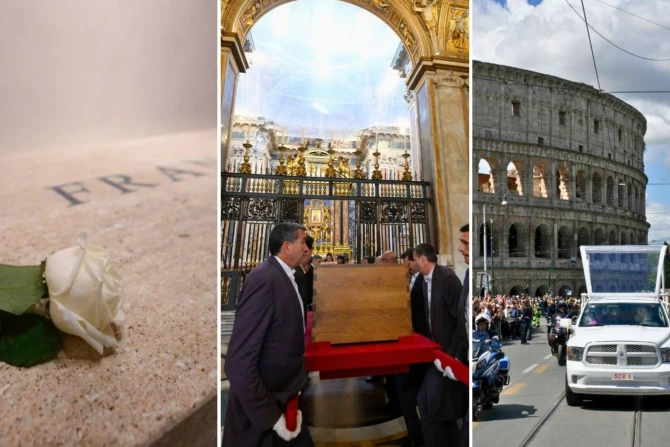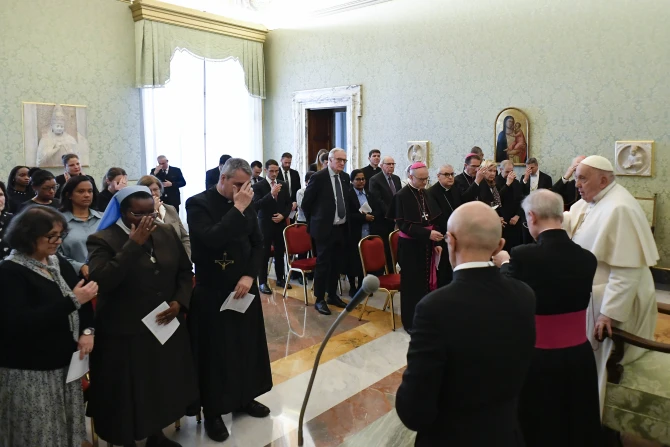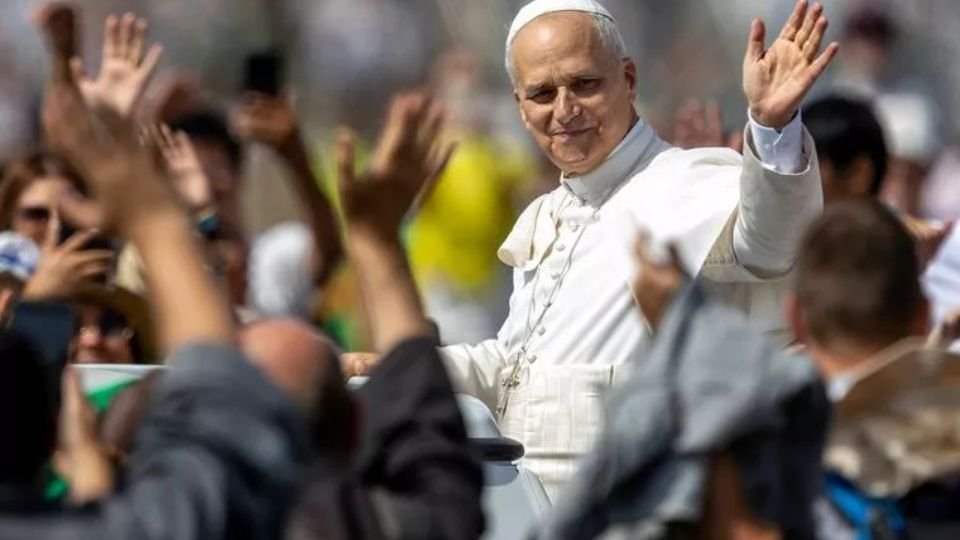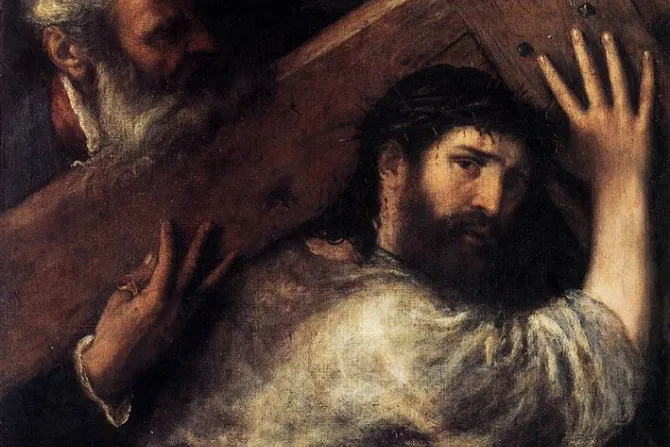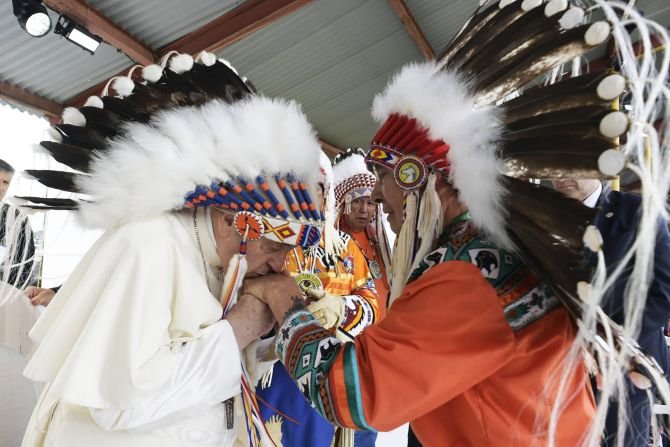The six-kilometer journey that transported Pope Francis’ body from St. Peter’s Basilica to St. Mary Major featured profound symbolism and emotion. Here are some of the more significant moments:
Departing through “the door of his home”
After the funeral Mass, pallbearers carried the coffin not through St. Peter’s Square but via the Perugino Door, steps from Casa Santa Marta — the Pope’s Vatican residence throughout his 12-year pontificate — from which he often “escaped” for surprise visits around Rome.
The Mexican popemobile as hearse
In a gesture rich with meaning, the coffin was transported in a white popemobile that Mexico had gifted to the Vatican in 2017 — a modified Dodge Ram that the pope used during his historic 2016 visit to the country. Pope Francis’ apostolic journey to Mexico lasted six days, from Friday, February 12, to Wednesday, February 17, 2016, when he visited five Mexican cities.
From Vatican to Rome crossing the Tiber
The procession crossed the Tiber River via the Prince Amadeo of Savoy Bridge, symbolically marking the passage from Vatican City to Rome. This moment represented Pope Francis’ intimate connection with his role as Bishop of Rome.
The Bishop of Rome’s final journey
Amid applause from attendees, the procession advanced along Corso Vittorio Emanuele, one of Rome’s main arteries, where thousands of faithful gathered to bid their final farewell to the Argentine pontiff. The route also included the iconic Piazza Venezia, Rome’s neuralgic center, before turning toward the Imperial Forums, connecting Francis’ pontificate with the Eternal City’s millennia of history.
Passing the Jesuit church
Pope Francis, the first Jesuit pontiff in history, maintained a special relationship with the Church of the Gesù in Rome, the main headquarters of the Society of Jesus. On July 31, 2013, the feast of St. Ignatius of Loyola, he presided at a concelebration in this church. During each apostolic journey outside Italy, he sought to meet with local Jesuits.
The Colosseum and his final Way of the Cross
One of the most moving moments was when the coffin passed by the Roman Colosseum. As pope, Francis presided each Good Friday over the traditional Way of the Cross, praying for peace and remembering Christian martyrs. Due to health problems, Pope Francis had been unable to preside over this prayer at the historic site since 2023.
The Via Merulana and Corpus Christi
Traveling along Via Merulana, the procession left the Basilica of St. John Lateran, the cathedral of the Rome diocese, in the background, recalling Francis’ special bond with his role as Bishop of Rome.
Via Merulana is the traditional route for Corpus Christi processions in Rome, dating back to Pope Gregory XIII, who established this route for religious processions between the two basilicas during the Jubilee of 1575.
Peter returned to his Mother: St. Mary Major
The culminating moment was the arrival at St. Mary Major Basilica, where Francis chose to be buried due to his profound devotion to the Byzantine icon of the Salus Populi Romani. This place held special significance for him, as he visited before and after each apostolic journey to entrust his mission to the Virgin Mary.
Francis rests near St. Jerome and Bernini
Besides Pope Francis, seven other pontiffs, various saints, and famous figures are buried in this church. Some have special connections to the late pope, including St. Jerome, whom Francis honored by instituting the Sunday of the Word of God on the saint’s liturgical memorial.
His tomb is steps away from Argentina in Rome
St. Mary Major Basilica is located just steps from the most Argentine place in the country: the Argentine embassy to Italy. Francis never returned to his homeland after being elected pontiff, and rumors circulated for years about his desire to be buried in Buenos Aires.
White roses from St. Thérèse of Lisieux on Pope Francis’ tomb
Pope Francis had a special devotion to the French Carmelite mystic, St. Thérèse of Lisieux, whose symbol is the white rose. The pope once explained his connection to these flowers, telling journalists in January 2015 after his trip to the Philippines: “When I don’t know how things will go, I have the habit of asking St. Thérèse of the Child Jesus to take the problem in her hands and send me a rose.”
This story was first published by ACI Prensa, CNA’s Spanish-language news partner. It has been translated and adapted by CNA.

